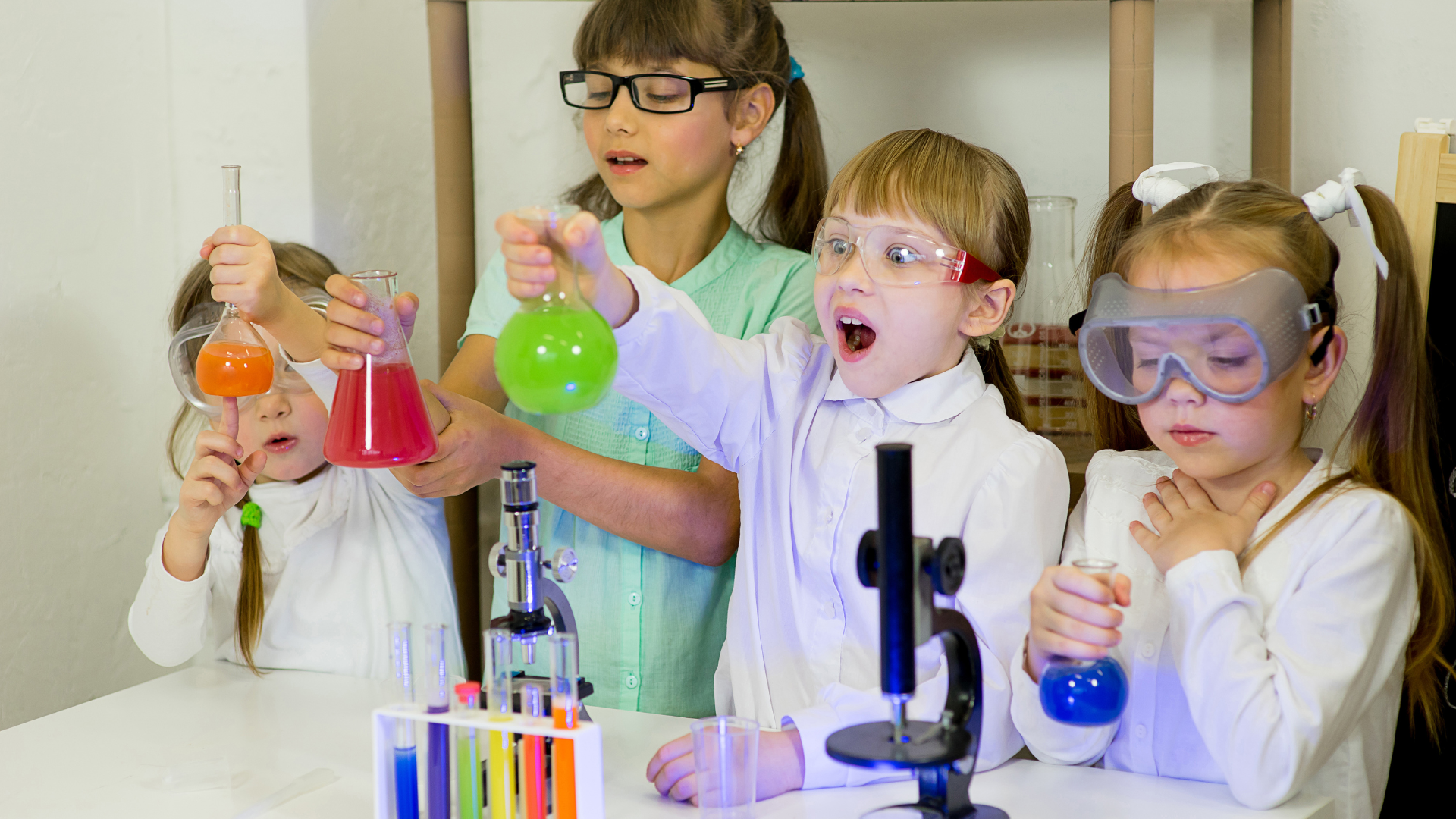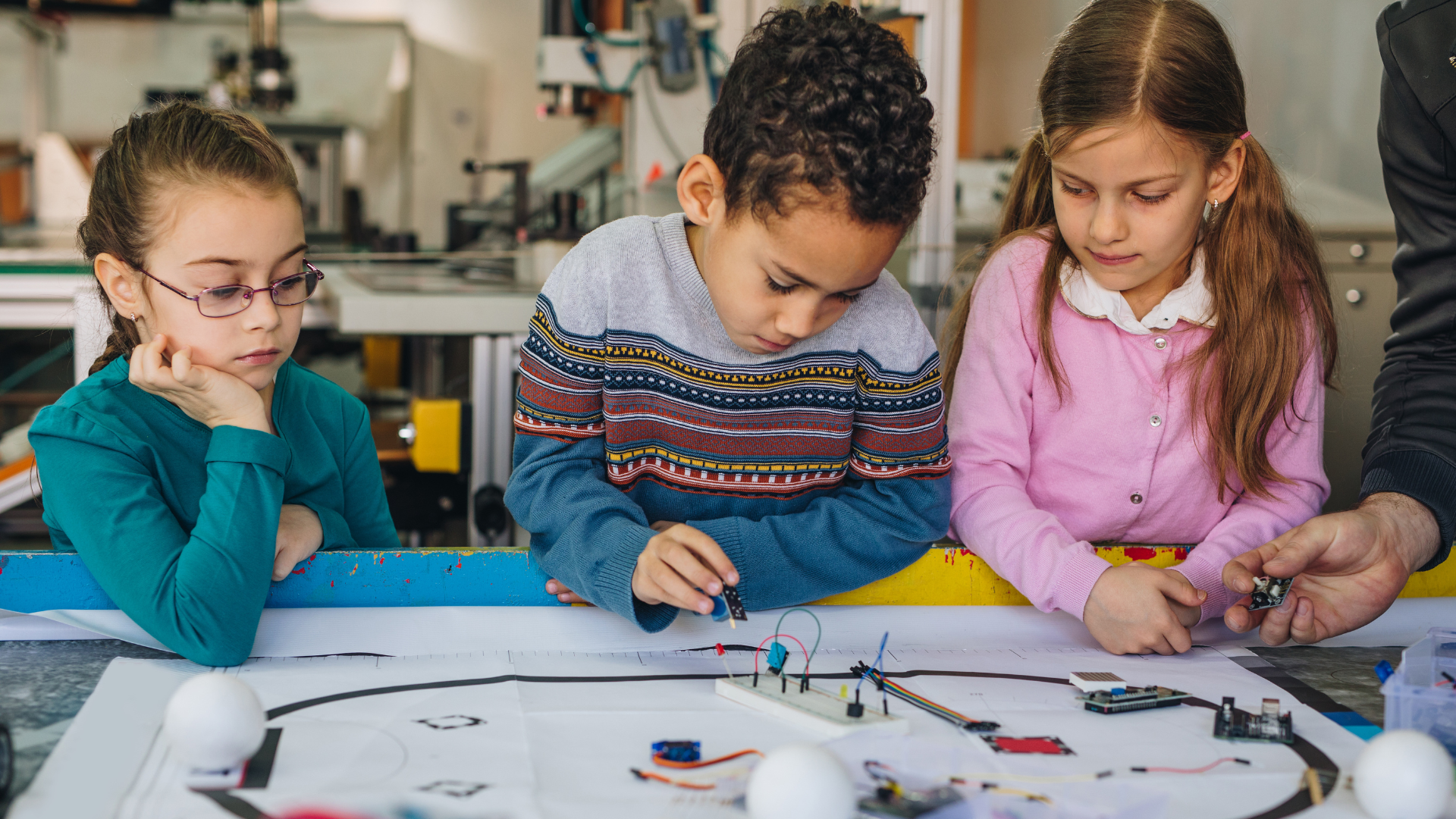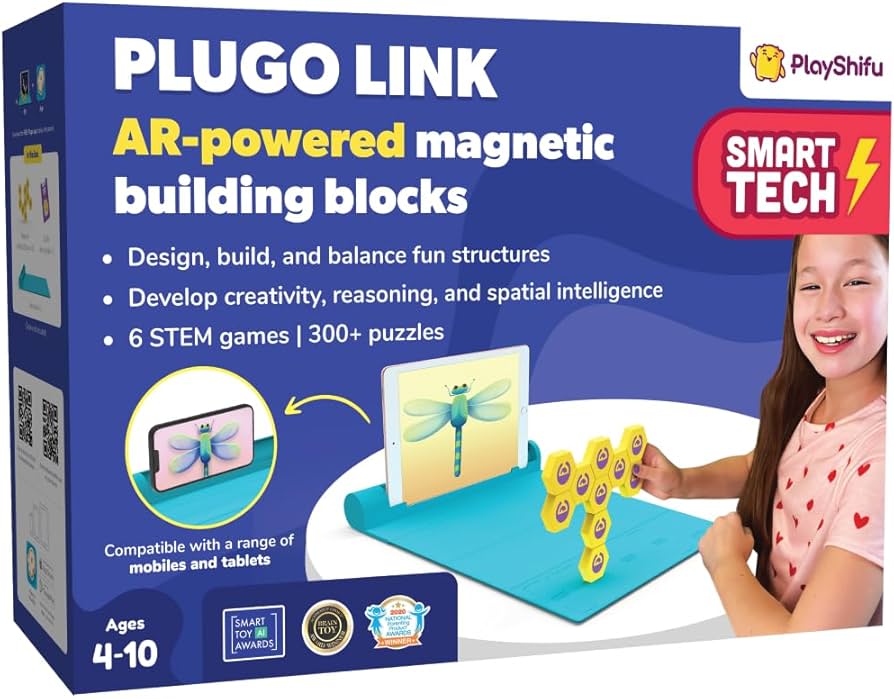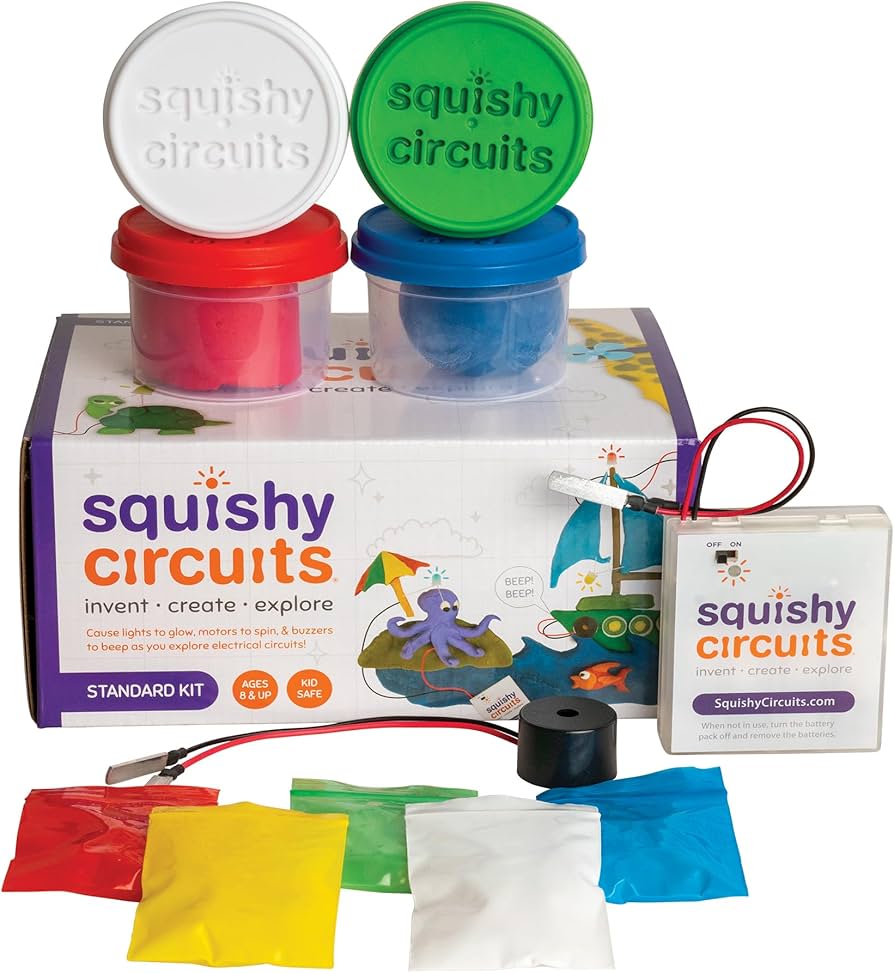Science is simple to understand. Simple Science explains complicated concepts.
In this blog post, we will straightforwardly explore the wonders of science. Our mission is to dissect complex scientific principles into bite-sized information for learning and understanding. This way, kids and adults can get to the lay of the land without being overwhelmed.
Simple Science explores curiosity and discovery. It’s learning how the world works and finding joy in that. So whether you are a student, a parent, or just someone curious about science, this blog will help you. Take a plunge and learn how science can be fun and straightforward.

Introduction To Simple Science
One perfect way of introducing children to the world of science is through simple science. It includes fun activities and easy-to-do experiments for your kids to learn. These activities allow children to learn basic science concepts without getting bogged down. They see how things work and they might ask questions about what they notice.
What is Hands-on learning? Why Is It Such A Big Deal?
Practical lessons are key in basic science. It allows children to relate to the material on a deeper level. Kids learn the concepts better when they do experiments. They learn by doing, which is what makes the knowledge stick. On top of that, it piques their interest and inspires them to discover more!
They gain critical thinking skills through practical work. They are trained to take results and check conclusions. It also builds their confidence as they witness the results of their experiments. This method always keeps science interesting and fun.
Safety For Young Scientists
The very first thing to remember in any science activity is safety. As always, supervise young scientists when they conduct experiments. Have the safety equipment such as goggles and gloves. Show them how to treat materials and tools carefully.
Choose simple, non-toxic materials for experiments. Have a first aid kit nearby when minor accidents happen. The workplace should be neat, Which lessens the chance of spills and other accidents. Safety in science allows children to be responsible and have fun in their experiments.
Kitchen Chemistry
Welcome to the exciting world of kitchen chemistry! Using simple ingredients from your kitchen, you can perform fascinating experiments. These activities are both fun and educational. Let’s dive into the world of kitchen chemistry.
Vinegar And Baking Soda Volcano
The classic vinegar and baking soda volcano is a favorite among kids. It’s easy to set up and quite dramatic.
Materials Needed:
- Vinegar
- Baking soda
- Dish soap
- Food coloring
- A container (like a small bottle)
- A tray to catch spills
Instructions:
- Place the container on the tray.
- Fill the container halfway with vinegar.
- Add a few drops of dish soap.
- Add a few drops of food coloring.
- Quickly add a tablespoon of baking soda and watch the eruption!
The reaction between vinegar and baking soda produces carbon dioxide gas. This gas creates bubbles and causes the “lava” to overflow.
Color-changing Milk
The color-changing milk experiment is a visual delight. It’s simple yet mesmerizing.
Materials Needed:
- Milk (whole milk works best)
- Food coloring
- Dish soap
- A shallow dish
- Cotton swabs
Instructions:
- Pour milk into the shallow dish.
- Add drops of food coloring to the milk.
- Dip a cotton swab into dish soap.
- Touch the soap-covered swab to the center of the milk.
The colors will swirl and mix in a beautiful display. The dish soap breaks the surface tension of the milk. This causes the food coloring to move and create stunning patterns.

Physics Fun
Physics can be fun and straightforward. With easy experiments, kids learn science concepts. Let’s explore two exciting activities.
Balloon Rocket
A balloon rocket is easy and exciting. It shows how thrust works.
- Balloon
- Straw
- String
- Tape
- Two chairs
- Tie the string between two chairs.
- Thread the straw onto the string.
- Blow up the balloon and hold the end.
- Tape the balloon to the straw.
- Release the balloon and watch it zoom!
The air escaping from the balloon creates thrust. This pushes the balloon forward along the string.
Marble Run
Marble runs are fantastic for learning about gravity and energy.
- Cardboard tubes
- Marbles
- Tape
- Scissors
- Large cardboard piece
- Cut the cardboard tubes in half lengthwise.
- Tape the tubes to the large cardboard piece.
- Arrange the tubes to create a path for the marble.
- Drop the marble from the top and watch it roll down!
Gravity pulls the marble down the track. The marble gains speed as it moves.
Nature Experiments
Explore the beauty of nature with simple hands-on science experiments. Such hands-on activities not only enable children and adults to see, learn from, and respect nature. Now, let us get into the fun part with some nature experiments that you can do indoors or in the backyard!
Plant Growth Observation
It is inherently fascinating and educational to see the development of a plant growing. You will learn about the life cycle of plants, the environment and the conditions in which they grow.
- Pick a plant that grows quickly, such as beans or peas.
- Garden Seeds: Plant seeds in soil in small pots.
- Set the pots in a sunny location.
- Water the plants regularly.
Make a basic chart to record growth over time. Every few days, measure the height of the plants and write down any new leaves or flowers. An example of a table for collecting observations:
| Date | Plant Height (cm) | New Leaves/Flowers |
| Day 1 | 0 | 0 |
| Day 4 | 2 | 1 leaf |
| Day 7 | 5 | 2 leaves |
Notice the differences when putting some of the plants in the shade and some in the sunlight. This experiment shows you how light impacts growth.
Bug Habitat Creation
Creating a bug habitat is a fun way to learn about insects and their environment. It helps you understand the role of bugs in nature.
- Find a clear container with a lid.
- Gather soil, small rocks, and leaves.
- Place these materials in the container.
- Add a few twigs and pieces of fruit.
- Find some bugs like ants, beetles, or worms.
- Gently place them in the habitat.
Observe how the bugs interact with their new environment. Note their behavior and any changes in the habitat. Keep the habitat moist but not wet. Here are some questions to consider:
- Do the bugs prefer certain parts of the habitat?
- How do they interact with each other?
- What do they eat?
Creating a bug habitat provides insight into the daily lives of insects. It also teaches the importance of ecosystems and biodiversity.

Water Wonders
Water is an essential part of our daily lives. It is also a source of many amazing science experiments. These activities can help us understand the properties of water. In this section, we explore some fascinating water wonders.
Density Tower
A density tower is a fun and easy experiment. It shows how liquids of different densities stack on top of each other. To create one, you need various liquids like honey, dish soap, water, and oil. Pour them slowly into a clear glass or jar. Notice how they form separate layers. The denser liquids sink to the bottom. The lighter liquids float on top. This simple experiment teaches us about density and buoyancy.
Water Filtration
Water filtration is a necessary process. It makes dirty water clean and safe to drink. You can make a basic water filter at home. Use materials like sand, gravel, and cotton. Fill a plastic bottle with these layers. Pour dirty water through the filter. Watch as the water becomes clear. This experiment shows how filters remove impurities. It also demonstrates the importance of clean water for our health.
Simple Electronics
Simple electronics can be fun and educational. It’s a great way to learn basic science concepts using everyday items. By exploring simple electronics projects, you can understand how electricity works. Let’s dive into two exciting projects: the Lemon Battery and a Simple Circuit.
Lemon Battery
A lemon battery is an easy science project. It shows how chemical energy converts to electrical energy. You will need a lemon, a copper coin, and a zinc nail. First, roll the lemon to release its juice inside. Then, insert the copper coin and the zinc nail into the lemon. Make sure they do not touch.
The lemon juice acts as an electrolyte. The copper coin and zinc nail create a chemical reaction. This reaction generates a small electric current. You can use a multimeter to measure the voltage. The lemon battery is a simple and effective way to learn about batteries.
Simple Circuit
Creating a simple circuit is another easy project. You will need a battery, a small light bulb, and some wire. First, connect one wire to the positive end of the battery. Attach the other end of this wire to the bottom of the light bulb.
Next, take another wire and connect it to the opposing end of the battery. Attach the other end of this wire to the side of the light bulb. When you connect both wires, the circuit completes. The light bulb will light up. This project teaches the basics of how circuits work.
Simple circuits help you understand how electricity flows. They are the foundation of all electronic devices. Start with these basic projects to build your knowledge.
Outdoor Science
Outdoor science activities are an engaging way for kids to explore the world. Science experiments like these help learners get dirty and make science enjoyable. Here are a few easy outdoor science activities for kids.
Shadow Tracing
Shadow tracing is a fun and simple outdoor activity. It teaches children how the sun impacts shadows.
What you need to do shadow tracing:
- Chalk
- A sunny day
- Power cleans A flat surface (like a driveway or sidewalk)
Follow these steps:
- Look for an area where the sun can cast a clean shadow.
- Stand still and have someone trace your shadow in chalk.
- Move to see how the shadow shifts.
- Follow the trace of the shadow at different hours of the day.
This activity teaches children about the movement of the sun and changing shadows.
Wind Direction Detector
Another simple outdoor science project is making a wind direction detector. It teaches children about how wind direction and patterns work.
Materials needed:
- A stick or dowel
- A piece of string
- A small mass (such as a washer)
Create a microcontroller circuit.
- Tie the string to the stick.
- Hang the mass on the other side of the thread.
- Position the stick vertically and observe the line flapping in the wind.
This easy tool allows kids to see which way the wind is blowing. It’s an engaging introduction to patterns in the weather.

Conclusion And Next Steps
Science is amazing. Simple experiments can create a lifelong taste for learning. To conclude, here are a few closing thoughts and steps to maintain curiosity.
Encouraging Curiosity
It begins with questions, which is something science has a lot of. Questions like “why” and “how” should be encouraged; This creates a solid base for learning. Answer their questions with the simplest of explanations.
Make observations. Watch how time affects things. It could be as simple as observing a plant grow. Note these observations in a notebook. Compare notes and look for patterns.
Notice the everyday stuff around you. Perform experiments with objects from around the house. One way to demonstrate this is by mixing some baking soda and vinegar to watch a chemical reaction. This demonstrates that science is everywhere.
Resources For Additional Experiments
You can find out a lot of things by giving references. Here’s some of that advice:
- Books: Check out your local library for children’s science books.
- Website: Visit educational websites like MEL Science and National Geographic Kids.
- Videos: Explore science experiments by way of YouTube channels like “CrashCourse Kids” and “SciShow Kids.”
Try new experiments. Here are some easy ideas:
- Build a volcano with baking soda and vinegar.
- Make your lava lamp with oil, water, and food coloring.
- Use salt or sugar solutions to grow crystals.
Keep experimenting. Document results. Discuss findings. It helps you to gain further insight and brings you closer to science.
Frequently Asked Questions
What Is Simple Science?
Simple science: Basic scientific concepts are easy to understand. It accounts for everyday phenomena.
Why Simple Science Matters?
All complex topics have been made more accessible by simple science. It encourages everyone, children and adults alike, to be curious and to try to understand.
How Do I Learn Simple Science?
The few simple core science you learn from books, online courses, and experiments. It helps to begin with basic principles.
What Are Some Easy Science Experiments?
For instance, you can create a volcano using baking soda and vinegar or a rainbow using a glass of water.
Conclusion
Simple science is easy to comprehend and can work even as fun. Straightforward explanations clarify complex concepts. However, this blog post shares basic information about science. Happy learning and exploring. Science is all around us in our everyday lives. Simple Science Facts to Share with Friends
Science is something everyone can understand and enjoy. Keep searching and questioning. Keep in mind that science is a journey, not a destination. Thank you for reading.
You might also like:


